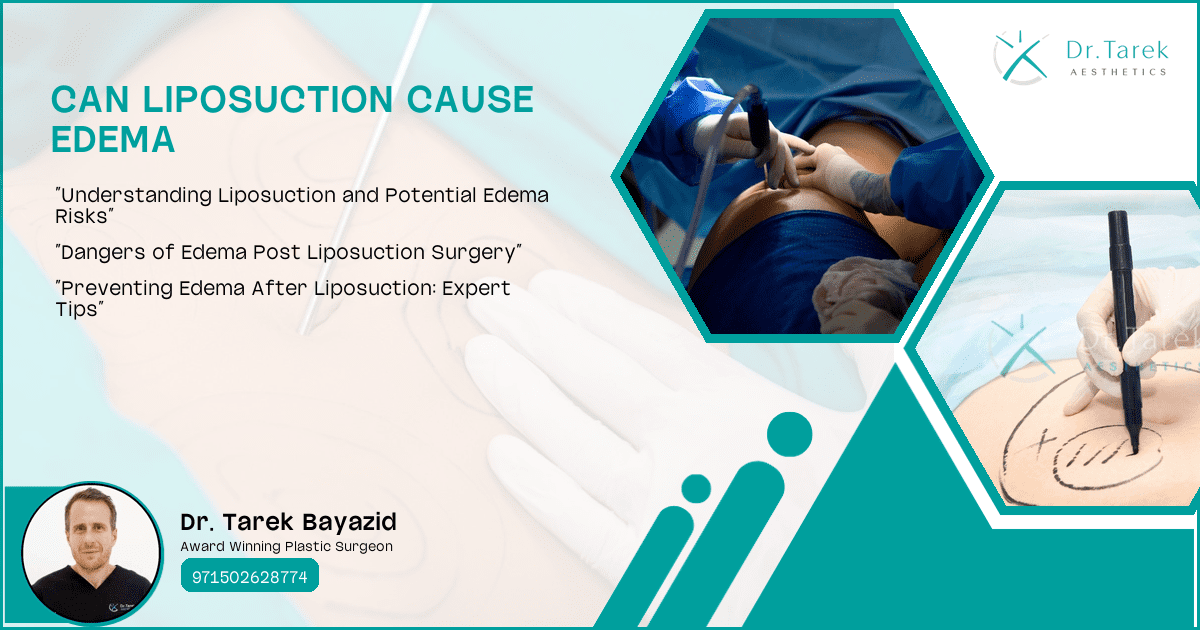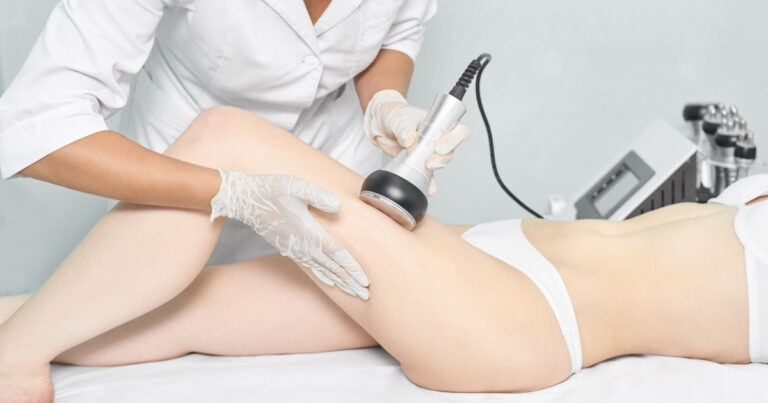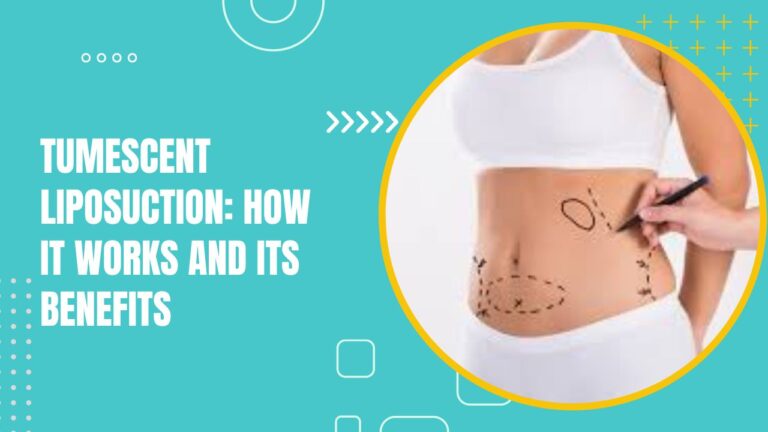Liposuction is a popular cosmetic procedure aimed at removing excess fat deposits to contour and shape the body. While it offers significant aesthetic benefits, patients often have concerns about potential side effects, including edema. This article delves into whether liposuction can cause edema, the types of edema associated with the procedure, and how to manage and prevent it.
Post-Operative Swelling
Post-operative swelling, or edema, is a common occurrence after liposuction. This swelling is the body’s natural response to the trauma caused by the surgical procedure. The body’s inflammatory response leads to fluid accumulation in the treated areas, resulting in swelling.
Factors Contributing to Edema After Liposuction
Several factors can contribute to the development of edema following liposuction. These include the extent of the surgery, the amount of fat removed, and the patient’s overall health. Additionally, the surgical technique used can also influence the degree of swelling experienced.
Normal vs. Excessive Swelling
It’s essential to differentiate between normal and excessive swelling. Normal swelling typically subsides within a few weeks, while excessive swelling may indicate complications such as infection or seroma formation. Monitoring the swelling and consulting with a healthcare provider if it persists is crucial.
Key Points:
Book A Consultation With Dr Tarek Bayazid
Top-rated Plastic Surgeon For Liposuction in Dubai
Installment Plan Available
- Post-operative swelling is a natural response.
- Factors like surgery extent and patient health contribute to edema.
- Normal swelling subsides within weeks; excessive swelling may indicate complications.
Types of Edema Associated with Liposuction
Localized Edema
Localized edema occurs in the specific areas where liposuction was performed. This type of swelling is usually temporary and resolves as the body heals.
Sculpted Liposuction Technology uses special tools to remove fat and shape the body
this method helps create a more defined look in specific areas during fat removal
Generalized Edema
Generalized edema involves swelling throughout the body, not just in the treated areas. This type of edema is less common and may require medical attention to address underlying causes.
Lymphedema
Lymphedema is a condition where the lymphatic system is damaged, leading to fluid accumulation and swelling. While rare, liposuction can sometimes disrupt lymphatic drainage, resulting in lymphedema.
Key Points:
- Localized edema is temporary and specific to treated areas.
- Generalized edema affects the entire body and may need medical attention.
- Lymphedema involves lymphatic system damage and fluid accumulation.
Timeline of Edema After Liposuction
Immediate Post-Operative Period
In the immediate post-operative period, swelling is most pronounced. This is due to the body’s initial inflammatory response to the surgical trauma.
First Week After Surgery
During the first week after surgery, swelling begins to decrease. However, patients may still experience significant edema as the body continues to heal.
Long-Term Swelling
Long-term swelling can persist for several months. While it gradually diminishes, some patients may experience residual swelling for up to a year.
Key Points:
- Immediate post-operative period has the most pronounced swelling.
- Swelling decreases during the first week but remains significant.
- Long-term swelling can persist for months, gradually diminishing.
Managing Edema Following Liposuction
Compression Garments
Wearing compression garments is a standard post-operative practice to manage edema. These garments help reduce swelling by applying consistent pressure to the treated areas.
Lymphatic Drainage Massage
Lymphatic drainage massage is a specialized technique that promotes fluid movement and reduces swelling. It can be particularly beneficial in managing post-liposuction edema.
Proper Hydration and Nutrition
Maintaining proper hydration and nutrition is crucial for recovery. Drinking plenty of water and consuming a balanced diet can help reduce swelling and support the healing process.
Key Points:
- Compression garments reduce swelling by applying pressure.
- Lymphatic drainage massage promotes fluid movement.
- Proper hydration and nutrition support recovery and reduce swelling.
How Long Does Swelling Last After Liposuction?
Typical Duration of Swelling
Swelling after liposuction typically lasts for several weeks. Most patients see a significant reduction in swelling within the first month.
Factors Affecting Swelling Duration
Several factors can affect the duration of swelling, including the extent of the surgery, the patient’s overall health, and adherence to post-operative care instructions.
When to Consult Dr. Tarek About Persistent Swelling
If swelling persists beyond the typical recovery period, it is essential to consult with Dr. Tarek. Persistent swelling may indicate complications that require medical intervention.
Key Points:
- Swelling typically lasts for several weeks, with significant reduction in the first month.
- Factors like surgery extent and patient health affect swelling duration.
- Consult Dr. Tarek if swelling persists beyond the typical recovery period.
Prevention Strategies for Minimizing Edema

Pre-Operative Preparation
Proper pre-operative preparation can help minimize post-operative swelling. This includes following the surgeon’s instructions and maintaining a healthy lifestyle.
Surgical Techniques to Reduce Trauma
Surgeons can use specific techniques to reduce trauma and minimize swelling. These techniques include using smaller cannulas and employing tumescent liposuction.
Post-Operative Care Instructions
Adhering to post-operative care instructions is crucial for minimizing edema. This includes wearing compression garments, staying hydrated, and avoiding strenuous activities.
Key Points:
- Pre-operative preparation helps minimize post-operative swelling.
- Specific surgical techniques can reduce trauma and swelling.
- Adhering to post-operative care instructions is crucial for minimizing edema.
Is Edema After Liposuction Permanent?
Temporary Nature of Post-Liposuction Edema
Post-liposuction edema is generally temporary. Most patients experience a gradual reduction in swelling over several months.
Cases of Prolonged Swelling
In some cases, swelling may persist for an extended period. This can be due to factors such as individual healing rates and the extent of the surgery.
Treatment Options for Persistent Edema
For persistent edema, treatment options include lymphatic drainage massage, compression therapy, and medical interventions. Consulting with a healthcare provider is essential for appropriate management.
Key Points:
- Post-liposuction edema is generally temporary.
- Some cases may experience prolonged swelling.
- Treatment options for persistent edema include massage and compression therapy.
The Role of Lymphatic System in Post-Liposuction Edema

How Liposuction Affects Lymphatic Drainage
Liposuction can impact the lymphatic system, leading to temporary disruptions in lymphatic drainage. This can result in fluid accumulation and swelling.
Importance of Lymphatic System in Fluid Balance
The lymphatic system plays a crucial role in maintaining fluid balance in the body. Disruptions to this system can lead to edema and prolonged swelling.
Techniques to Support Lymphatic Function
Supporting lymphatic function is essential for reducing post-liposuction edema. Techniques include lymphatic drainage massage, staying hydrated, and gentle exercise.
Key Points:
- Liposuction can temporarily disrupt lymphatic drainage.
- The lymphatic system is crucial for fluid balance.
- Supporting lymphatic function helps reduce post-liposuction edema.
Can Liposuction Cause Edema in Other Parts of the Body?
Localized vs. Systemic Edema
Liposuction typically causes localized edema in the treated areas. However, systemic edema, affecting other parts of the body, can occur in rare cases.
Factors Influencing Edema Distribution
Several factors can influence the distribution of edema, including the extent of the surgery, the patient’s overall health, and individual healing responses.
Managing Unexpected Swelling in Non-Treated Areas
Managing unexpected swelling in non-treated areas involves consulting with a healthcare provider. They can assess the situation and recommend appropriate interventions.
Key Points:
- Liposuction typically causes localized edema.
- Factors like surgery extent and patient health influence edema distribution.
- Consult a healthcare provider for unexpected swelling in non-treated areas.
Advanced Treatments for Persistent Edema After Liposuction

Ultrasound Therapy
Ultrasound therapy uses sound waves to promote fluid movement and reduce swelling. It can be an effective treatment for persistent edema.
Radiofrequency Treatments
Radiofrequency treatments use energy waves to stimulate tissue healing and reduce swelling. This technique can help manage post-liposuction edema.
Specialized Compression Techniques
Specialized compression techniques, such as custom-fitted garments, can provide targeted pressure to reduce swelling and support recovery.
Key Points:
- Ultrasound therapy promotes fluid movement and reduces swelling.
- Radiofrequency treatments stimulate tissue healing and reduce swelling.
- Specialized compression techniques provide targeted pressure to reduce edema.
Recovery Timeline and Expectations
Milestones in the Healing Process
The healing process after liposuction involves several milestones. Initial swelling decreases within the first few weeks, with continued improvement over several months.
When to Resume Normal Activities
Patients can typically resume normal activities within a few weeks. However, strenuous activities should be avoided until the surgeon provides clearance.
Long-Term Results and Body Contouring
Long-term results of liposuction include improved body contouring and reduced fat deposits. These results become more apparent as swelling subsides.
Key Points:
- Initial swelling decreases within the first few weeks.
- Normal activities can be resumed within a few weeks, avoiding strenuous activities.
- Long-term results include improved body contouring and reduced fat deposits.
Statistics on Edema After Liposuction
Incidence Rates of Post-Liposuction Edema
According to the American Society of Plastic Surgeons, post-liposuction edema is a common occurrence, with most patients experiencing some degree of swelling.
Recovery Time Statistics
The National Institutes of Health reports that the average recovery time for liposuction is several weeks, with most patients seeing significant improvement within the first month.
Patient Satisfaction Rates Despite Temporary Edema
The American Board of Cosmetic Surgery indicates high patient satisfaction rates despite temporary edema. Most patients are pleased with their results once the swelling subsides.
Key Points:
- Post-liposuction edema is common, with most patients experiencing swelling.
- Average recovery time is several weeks, with significant improvement in the first month.
- High patient satisfaction rates despite temporary edema.
How Long Does Swelling Last After Liposuction?
Swelling after liposuction typically lasts for several weeks. Most patients see a significant reduction in swelling within the first month.
Factors Affecting Swelling Duration
Several factors can affect the duration of swelling, including the extent of the surgery, the patient’s overall health, and adherence to post-operative care instructions.
When to Consult Dr. Tarek About Persistent Swelling
If swelling persists beyond the typical recovery period, it is essential to consult with Dr. Tarek. Persistent swelling may indicate complications that require medical intervention.
Key Points:
- Swelling typically lasts for several weeks, with significant reduction in the first month.
- Factors like surgery extent and patient health affect swelling duration.
- Consult Dr. Tarek if swelling persists beyond the typical recovery period.
FAQ’s
1. What Causes Edema After Liposuction?
Edema, or swelling, is common after liposuction due to the body’s natural response to the trauma of surgery. During the procedure, tissue manipulation and fluid shifts can lead to localized swelling as the body works to heal the area.
2. How Long Does Edema Last After Liposuction?
Swelling typically peaks within the first few days post-surgery and then gradually decreases over the following weeks. Most patients see a significant reduction in edema after 4 to 6 weeks, but minor swelling can persist for several months, depending on individual healing factors.
3. Can I Reduce Edema After Liposuction?
Yes, there are several ways to help reduce edema. Wearing compression garments, following your surgeon’s post-operative instructions, staying hydrated, and avoiding salty foods can all help manage swelling and support the healing process.
4. When Should I Be Concerned About Swelling After Liposuction?
While some swelling is normal, if you experience severe or sudden swelling, pain, redness, or warmth in the treated area, it may indicate an infection or another complication. Contact your healthcare provider if you have any concerns about unusual or persistent edema.







